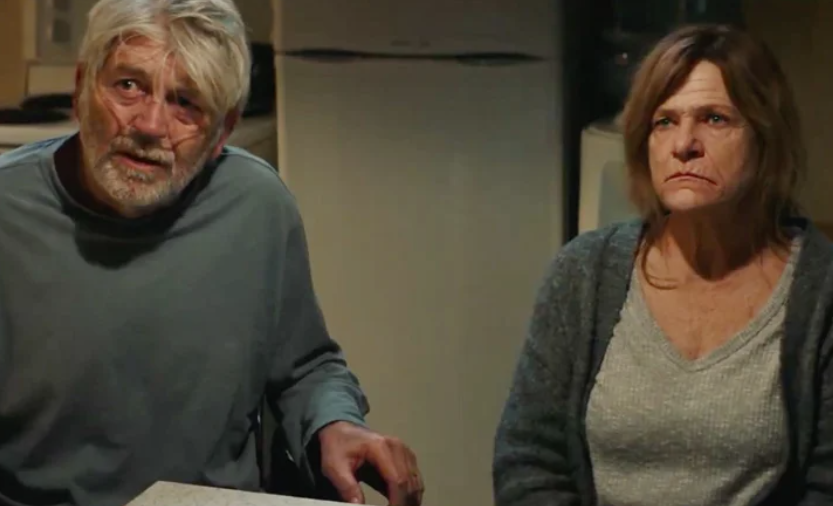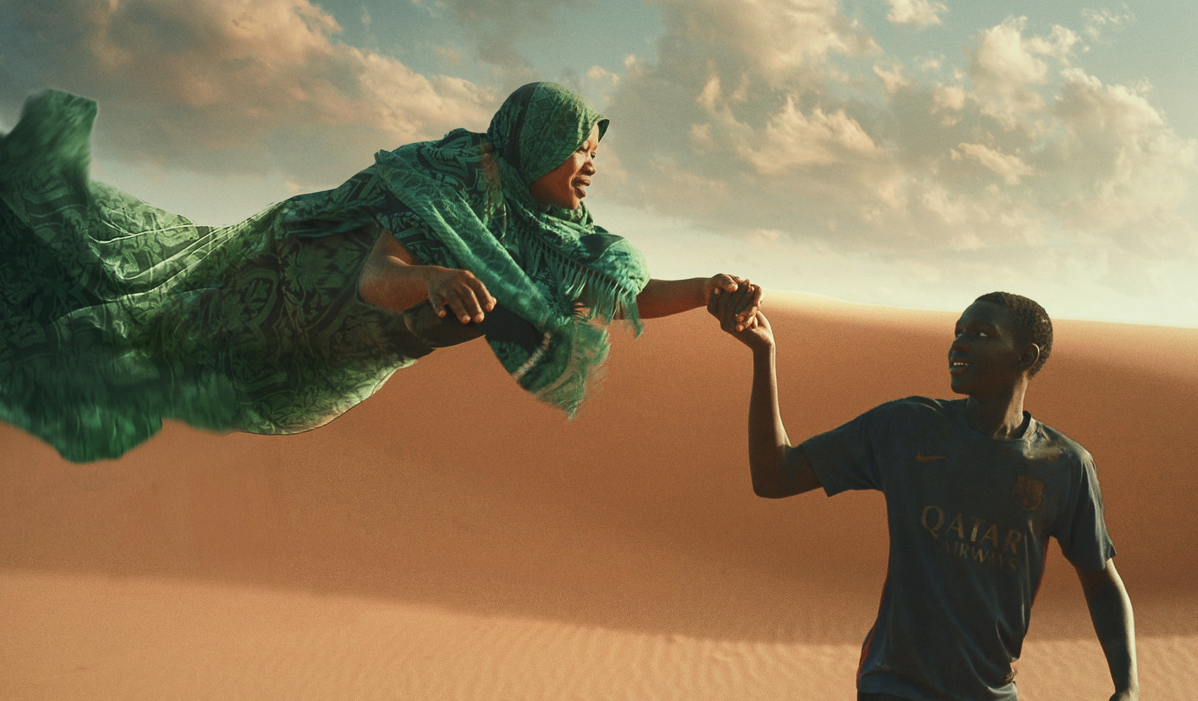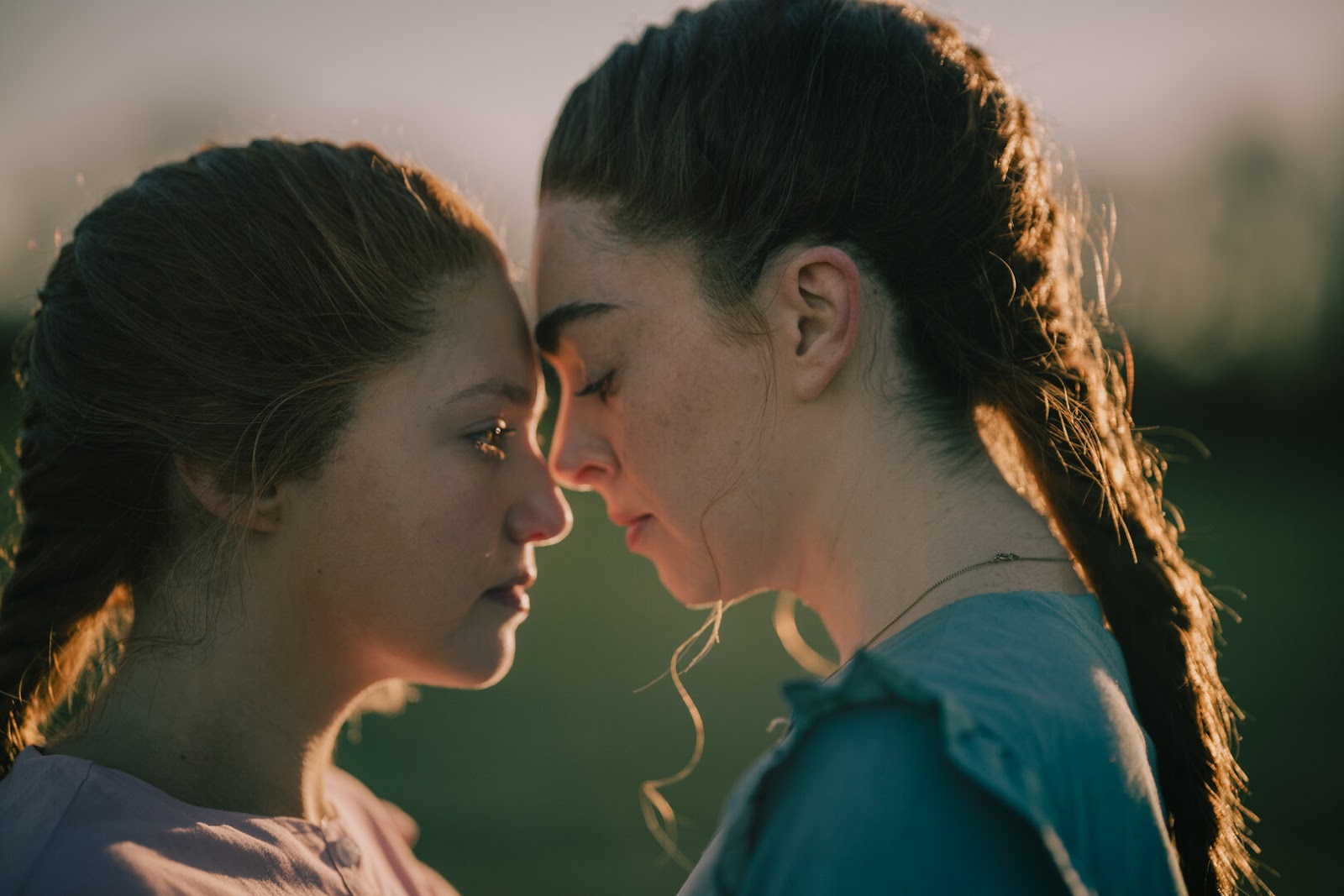 There cannot be too much left to do with the horror sub-genre that is the vampire film. We’ve had sparkly ones, sinister ones, bloodthirsty ones and erotic ones. We’ve had films that are genuinely terrifying and films that are more about a love story. Well, what about a vampire film that sits somewhere in between? Oh, and the vampire is a puppet.
There cannot be too much left to do with the horror sub-genre that is the vampire film. We’ve had sparkly ones, sinister ones, bloodthirsty ones and erotic ones. We’ve had films that are genuinely terrifying and films that are more about a love story. Well, what about a vampire film that sits somewhere in between? Oh, and the vampire is a puppet.
That is a very reductive synopsis of Adrien Beau’s The Vourdalak, an adaptation of Aleksei Tolstoy’s 1839 novella. The film is not only shot in 16mm, rendering it like something made in the early 1960s, but it revels in its dream-like quality – all soft focus, grainy close-ups and blurred edges. It is a film that offers both style and substance, surely no easy feat in a genre that has been done to death, if you’ll pardon the pun.
The Vourdalak opens, like any good vampire movie should, with a clap of thunder and a knock at the door. An envoy of the King of France has had his horses and baggage stolen and is in need of urgent help. He is told – by a mouth in the gap of an old wooden door – to walk straight to the forest until he comes to the home of the Gorcha family, who will aid him (it can be no coincidence that their family name sounds similar to the French for ‘throat’). He is warned that, no matter what happens, he must keep to the path as the forest is full of danger.
And so, the scene is set for a film that feels beautifully absurd, teasingly erotic and fairytale-like in its tragedy.
Kacey Mottet Klein lends a superb physicality to the snobbish envoy, Marquis Jacques Antoine Saturnin d’Urfe. He is a snob, horrified by the Gorcha family’s simple food and unusual clothing. He is a man bound by manners, by status. It is, therefore, hilarious to watch him prance and leap like a startled deer every time he sees something he is unfamiliar with. Mottet Klein makes the most of face-on close-ups, too, giving layers to his character through his hugely expressive eyes.
Ariane Labed is also mesmering to watch as Sdenka, a woman who seems genuinely haunted by her lost love. She enjoys hovering dangerously on the precipice of a ragged cliff edge, waiting for the right moment to leap. Again, Labed lends a phenomenal physicality to the role, every sinew of her body undulates with terror as she prays, dances or threatens. Her eyes, ringed with brown liner, seem constantly on the brink of tears; constantly searching in the distance for some relief.
The puppetry work in the film is incredible. Making the vourdalak in question quite literally not human is a bold choice – one that entirely pays off. The slow reveal of this as the Gorcha patriarch slowly peels off his layers of clothing is an utter delight. The puppet – with a rich, velvety voice provided by the director himself – looks like a corpse. Its teeth protrude from its mouth like they cannot be contained; its eyes are buried deep in the skull; its cheekbones look like they could carve flint. Most importantly, it is a credible threat. It is clear that the Gorcha family is living in fear of their deceased father, eking out a life entirely in his grip. The vourdalak needs to drink the blood of everyone in the house so that it may keep living. There is only one ‘rule’ – he can only tuck into those he truly loves.
That, in itself, is an interesting take on vampiric tropes. Sure, there are mentions of stakes through the heart and getting your neck bitten, but this is a film that largely rejects the usual  rules. After all, Monsieur Gorcha is up and walking about in the daytime, appears to be eating his meals and can see his reflection in the water. There are some relatively gruesome deaths but even these feel hyper-stylised, with lashing of post-box red blood. What is the most creepy about the vourdalak in question is the sound it makes as it slabbers and sucks on its burial robe. That wet, sloshing noise is both an irritant and a warning.
rules. After all, Monsieur Gorcha is up and walking about in the daytime, appears to be eating his meals and can see his reflection in the water. There are some relatively gruesome deaths but even these feel hyper-stylised, with lashing of post-box red blood. What is the most creepy about the vourdalak in question is the sound it makes as it slabbers and sucks on its burial robe. That wet, sloshing noise is both an irritant and a warning.
The costuming is so striking, as you would expect from a director who has worked with internationally renowned fashion houses. Every character is dressed like they’re in their own fairytale (or should that be nightmare) giving a glimpse as to their emotional state. The Marquis is all powder and heels, proud of his beauty spots and curled wig. Sdenka drapes herself in flowing sari-like robes and adorns her head and arms with tinkling silver jewellery. Her brother, Piotr, likes to dress in a similar fashion but does so with much more colour. Their sister-in-law, Anja, dresses like a pious lady-in-waiting. It is simply glorious to sit back and take in all of the detailing of each piece.
The Vourdalak is a truly stunning work of art. The stylisation, the framing, and the costuming all build and layer to create something genuinely fascinating to look at. Add in stellar, hyper-physical performances and an altogether daring kind of threat and you have a brilliant contribution to the genre. An absolute must see.
The Vourdalak is screening at the Glasgow Film Festival. Get your tickets here.
- Six of the Best: Not Quite Christmas - December 12, 2024
- Glasgow Film Festival 2025 Announces Country Focus, Special Events and UK Wide Screenings - December 11, 2024
- Armand – Review - November 4, 2024




